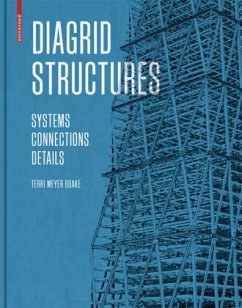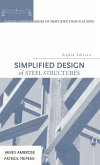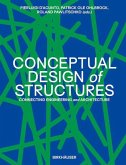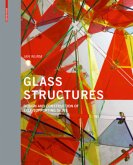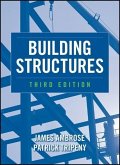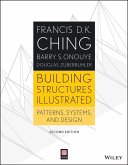Diagrids are load-bearing structures made of steel diagonal grids. They were first used in the great buildings of the turn of the millennium, such as the Swiss Re Tower in London ("The Gherkin”) and the Hearst Magazine Tower in New York City. Dagrids owe their ensuing popularity not only to their stunning aesthetic value, but also to their very tangible benefits: lateral loading capacity, a massive saving of material, a significant gain in open, usable floor area, and increased flexibility. At its opening in 2014, the Leadenhall Building in London will be the first skyscraper without a bearing inner core—thanks to a diagrid structure.
This book explains comprehensively for the first time all of the aspects involved in this new bearing structure. The author, experienced in teaching, research, and practice (recent publication: Understanding Steel Design. An Architectural Design Manual, 2011), has tracked the development of this technology from its beginnings and employs photographic documentation of the construction phases of many diagrid structures.
Diagrids sind Tragwerke aus diagonalen Stahlfachwerkgittern, die zuerst bei spektakulären Großbauten der Jahrtausendwende wie dem Swiss Re Tower in London ("die Gurke") und dem Hearst Magazine Tower in New York eingesetzt wurden. DieVerbreitung, die Diagrids seitdem gefunden haben, verdanken sie nicht nur ihrer atemberaubenden Ästhetik, sondern vor allem handfesten Vorteilen: einer massiven Materialersparnis, einem signifikanten Gewinn an frei nutzbarer Geschossfläche und einem Zuwachs an Flexibilität. Bei seiner Eröffnung 2014 wird das Leadenhall Building in London das erste Hochhaus ohne tragenden inneren Kern sein - dank des Diagrid-Tragwerks.
Dieses Buch erklärt erstmals umfassend alle Aspekte dieses neuen Tragwerkssystems. Die in Lehre, Forschung und Praxis erfahrene Autorin (zuletzt Stahl verstehen. Entwerfen und Konstruieren mit Stahl, 2011) hat die Entwicklung der Technologie von Beginn an begleitet und greift für die detaillierte Darstellung auf fotografische Dokumentationen der Bauphasen zahlreicher Diagrid-Konstruktionen zurück.
Hinweis: Dieser Artikel kann nur an eine deutsche Lieferadresse ausgeliefert werden.
This book explains comprehensively for the first time all of the aspects involved in this new bearing structure. The author, experienced in teaching, research, and practice (recent publication: Understanding Steel Design. An Architectural Design Manual, 2011), has tracked the development of this technology from its beginnings and employs photographic documentation of the construction phases of many diagrid structures.
Diagrids sind Tragwerke aus diagonalen Stahlfachwerkgittern, die zuerst bei spektakulären Großbauten der Jahrtausendwende wie dem Swiss Re Tower in London ("die Gurke") und dem Hearst Magazine Tower in New York eingesetzt wurden. DieVerbreitung, die Diagrids seitdem gefunden haben, verdanken sie nicht nur ihrer atemberaubenden Ästhetik, sondern vor allem handfesten Vorteilen: einer massiven Materialersparnis, einem signifikanten Gewinn an frei nutzbarer Geschossfläche und einem Zuwachs an Flexibilität. Bei seiner Eröffnung 2014 wird das Leadenhall Building in London das erste Hochhaus ohne tragenden inneren Kern sein - dank des Diagrid-Tragwerks.
Dieses Buch erklärt erstmals umfassend alle Aspekte dieses neuen Tragwerkssystems. Die in Lehre, Forschung und Praxis erfahrene Autorin (zuletzt Stahl verstehen. Entwerfen und Konstruieren mit Stahl, 2011) hat die Entwicklung der Technologie von Beginn an begleitet und greift für die detaillierte Darstellung auf fotografische Dokumentationen der Bauphasen zahlreicher Diagrid-Konstruktionen zurück.
Hinweis: Dieser Artikel kann nur an eine deutsche Lieferadresse ausgeliefert werden.

